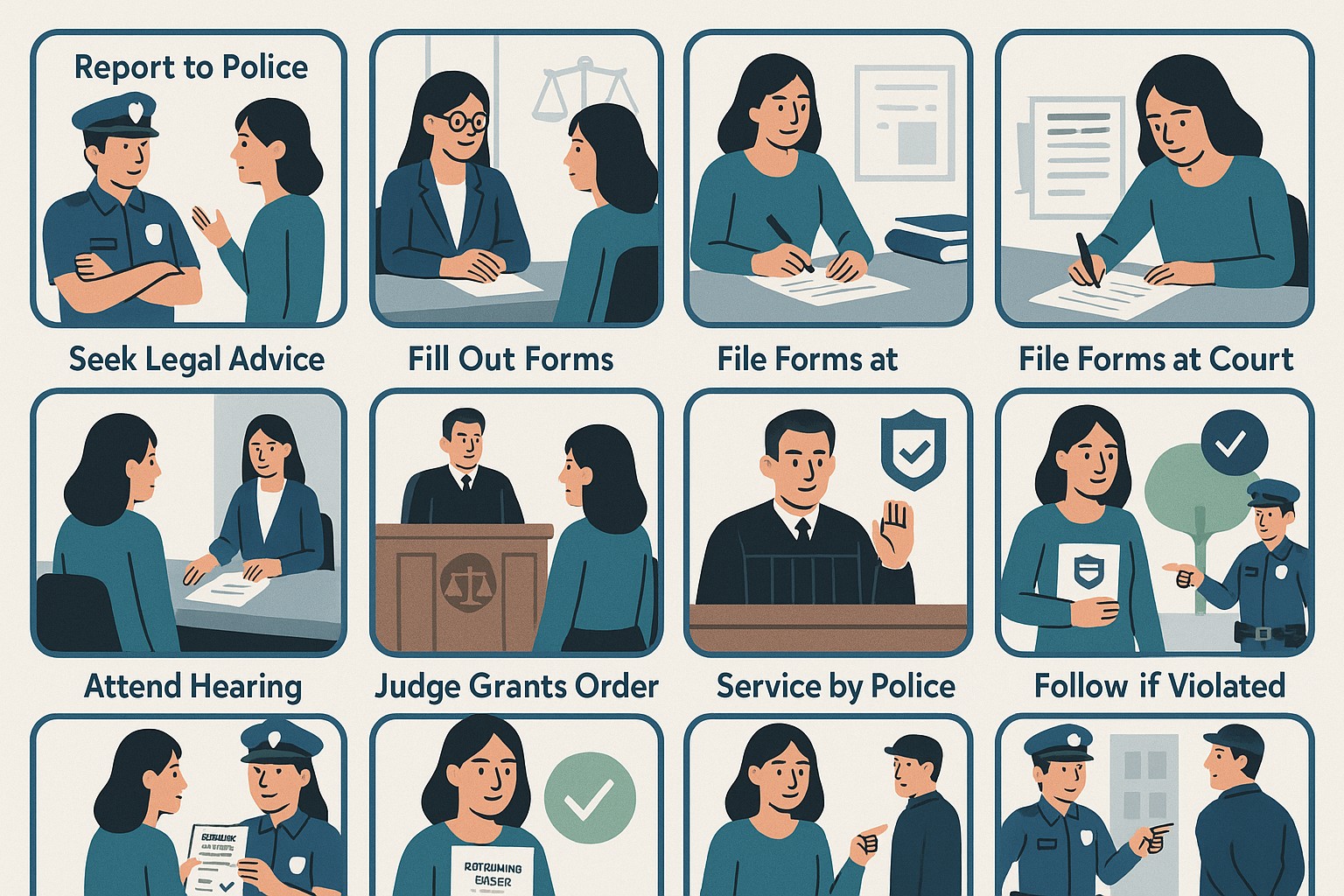Step-by-Step: How to Get a Restraining Order in Toronto (2025)
Seeking a Restraining Order is a crucial step towards safety for survivors of domestic violence in Toronto. This comprehensive guide outlines the process step-by-step in 2025, empowering you with the knowledge to protect yourself and your loved ones.

If you are experiencing domestic violence in Toronto, securing a Restraining Order is a vital legal tool that can provide critical protection for you and your family. This order legally prohibits an abuser from contacting you, coming near your home or workplace, or communicating with your children. Navigating the legal system can be daunting, but this step-by-step guide for 2025 will empower you with the knowledge to seek the safety you deserve.
What is a Restraining Order?
In Ontario, a Restraining Order is a court order designed to protect a person from harassment, violence, or threats. It is issued by a Family Court judge and can impose conditions on the person causing harm, such as:
-
Prohibiting contact (in person, by phone, email, text, social media).
-
Ordering them to stay a certain distance from your home, workplace, or children's school.
-
Prohibiting them from communicating with or approaching your children.
It's different from a Peace Bond, which is a criminal court order that can be sought by the police or an individual if there's a fear of future harm, even if violence hasn't occurred yet. A Restraining Order is obtained through the family court.
Eligibility and Grounds
You can apply for a Restraining Order if you have reasonable grounds to fear for your safety or the safety of your children due to a family member's conduct (e.g., your current or former partner, or a person with whom you share a child). This includes physical, emotional, psychological, sexual, or financial abuse.
Step-by-Step Process to Get a Restraining Order in Toronto (2025)
Step 1: Seek Immediate Safety & Support
Your safety is the absolute priority.
-
If you are in immediate danger, call 9-1-1.
-
Reach out to a domestic violence helpline or shelter for immediate support, safety planning, and confidential advice.
-
Assaulted Women's Helpline: 1-866-863-0511 (24/7)
-
211 Ontario: Call 2-1-1 for local shelter information and services.
-
Step 2: Gather Documentation and Evidence
The strength of your application relies on evidence. Begin collecting anything that supports your claims:
-
Police Reports: If you've called the police, obtain copies of reports.
-
Medical Records: Documentation of injuries.
-
Communications: Abusive texts, emails, voicemails, social media messages. Take screenshots and print copies.
-
Photos/Videos: Of injuries, property damage, or intimidating behavior.
-
Journal/Diary Entries: Detailed accounts of incidents, including dates, times, and specific actions.
-
Witness Statements: If others have witnessed abuse, note their willingness to provide a statement.
Step 3: Get Legal Advice
This is a critical step. While you can apply for a Restraining Order yourself, having legal representation significantly increases your chances of success and ensures your rights are protected.
-
Legal Aid Ontario (LAO): If you have a low income, you may qualify for a Legal Aid Certificate to hire a lawyer. Contact LAO at 1-800-668-8258.
-
Community Legal Clinics: Some clinics offer free family law services.
-
Lawyer Referral Services: The Law Society of Ontario offers a referral service that may provide a free initial consultation.
Step 4: Prepare and File Your Court Documents
Your lawyer will help you prepare the necessary documents:
-
Application: This document formally asks the court for a Restraining Order and outlines your request.
-
Affidavit: This is a sworn statement of facts describing the history of abuse, specific incidents, and why you fear for your safety. It must be truthful and detailed.
-
Other Supporting Documents: Any evidence you gathered (Step 2) will be attached as exhibits.
These documents are filed with the Ontario Court of Justice or the Superior Court of Justice in Toronto.
Step 5: Attend Court Hearings
-
Urgent/Interim Order: If there is an immediate risk, your lawyer can request an urgent hearing to get a temporary (interim) Restraining Order very quickly, often without the abuser being present initially. This order will be reviewed later.
-
Case Conference/Settlement Conference: The court will schedule conferences to try to resolve issues or prepare for a final hearing.
-
Motions/Trials: If an agreement isn't reached, you may need a motion for a temporary order or a trial for a final order, where evidence is presented and witnesses may testify.
Step 6: Service of Documents
Once your documents are filed and potentially an interim order is made, they must be "served" (officially delivered) to the abuser. This must be done properly and often by a third party (e.g., a process server) to ensure your safety and legal validity.
Step 7: Enforcement
Once a Restraining Order is issued, it is a legally binding document.
-
Notify Police: Provide a copy of the order to your local police service. They can then enforce it.
-
Violations: If the abuser violates the order, call the police immediately (9-1-1 if urgent). Violation of a Restraining Order is a criminal offense and can lead to arrest and charges.
Important Considerations
-
Safety Planning: Continue to prioritize your safety throughout the entire process. Your lawyer and support workers can help you with a personalized safety plan.
-
Truthfulness: Your affidavit must be truthful. Providing false information can have serious legal consequences.
-
Duration: Restraining Orders can be temporary or permanent, depending on the court's decision.
-
Children: The order can include protections for your children. Discuss their safety and any custody/access arrangements with your lawyer.
Seeking a Restraining Order is a powerful step towards regaining control and ensuring safety. While the process requires courage and persistence, Toronto's legal and support services are here to guide you. You deserve to live free from fear.
